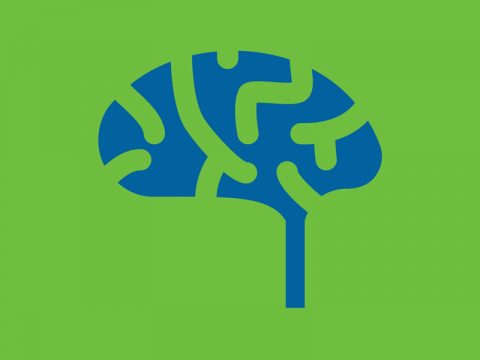
I love football. I was the quarterback of my alma mater’s back to back, intramural flag football championship team at Roberts Wesleyan College in the late 90s, early 2000s. I was even captain of my 8th grade football team (the very peak of my athletic career) at dear old Glens Falls middle school. Everything was downhill since. I hope my kids have better outcomes with athletics that I did. But sports are changing.
As a father of 3 boys, my wife and I will have some decisions to make as they age and get interested in contact centric, organized sports (hopefully). The biggest fear for many athletes and parents nowadays are the potential for neurological degeneration associated with concussions. You know this as CTE (Chronic Traumatic Encephalopathy). It’s mentioned every NFL Sunday, there’s a movie about it, and it’s not being taken lightly by many pro football players.
The problem is that it’s not just a football thing and not just a concussion thing. Wrestling and hockey have higher rates of concussions than football. The other problem is that there are many other athletes that have a had concussions but don’t have CTE. In my paradigm that the body never does stupid stuff and no ailment occurs in isolation, there must be more to the story that makes one susceptible to neurological degeneration associated with head trauma, especially when the symptoms show decades after the events.
In my superficial digging, there is more and more research coming out that CTE may be catalyzed by head trauma (regardless of concussion status) but perpetuated by an autoimmune process. It’s like childhood emotional trauma leading to autoimmune expression later in life. The traumatic event (physical or emotional) sets up a persistent pattern of dysfunction often surfacing decades later. Could this also be a mechanism in PTSD?
A lot of the research is lead by a cross town university of my alma mater by Dr. Jeffrey J. Bazarian, M.D., M.P.H
His research is showing that there is a breakdown in the blood-brain barrier. The blood-brain barrier is like a semi-permeable gate between the brain and bloodstream. When the barrier is working properly, it holds in proteins and molecules that bathe the brain and protect it from foreign substances. With blows to the head, however, the barrier opens slightly and allows some proteins to leak into the bloodstream.
Foreign proteins are treated like antigens. Antigens are typically a toxin or other foreign substance that induces an immune response in the body, especially the production of antibodies. Seasonal allergy sufferers know this all too well. A brain recognizes brain proteins but when those brain proteins get introduced into the blood (body), it’s a strange man in a strange land.
What adds insult to injury is that those antibodies in the body now have the ability to migrate into the brain since the barrier is compromised. But I would argue that head injury is not the only factor that has lead to the former football players that donated their bodies to science to be examined for CTE after they died.
Are concussions the only mechanism of breaking down the blood-brain barrier? Not at all. I see a compounding issue, especially in elite level athletes that need to perform through pain and injury that is potentially getting over looked.
Another mechanism that breaks down the blood brain barrier is the elevation of homocysteine. There’s a cascade of reasons that homocysteine can be elevated. For argument’s sake, one simple one that I will use to expand my theory is looking at B12. A deficiency of B12 can lead to high homocysteine.
A deficiency may not just be a consumption problem. There can be issues in digestion, absorption, and assimilation of the nutrient. And these processes fall within various locations in the tube from mouth to anus we call the gut. What’s one of the fastest ways to destroy the gut? NSAIDS. That’s not even a professional athlete problem.
A survey of American football players showed that one out of seven high school athletes took NSAIDs daily and the 29% of college athletes took them as a preventive measure on the day of a game. We’re trying to quantify the accumulative effects of repeated head trauma but what about the accumulative effects of painkillers? I’m guilty of it. Vitamin I (Ibuprofen) was a staple in my college days and I was only a rec league athlete. Guess what time of life I suffered horribly from eczema? It’s no coincidence that I had an autoimmune process developing and expressing while I was overdosing on ibuprofen, just so I wouldn’t be sore after the game or workout.
My point is that it could be possible the blood brain barrier is already compromised from other mechanisms prior to initiation of head trauma. Will concussions contribute? Absolutely. But was the concussion the catalyst or just a contribution to CTE?
There’s going to be more to the story with CTE than just the amount of head trauma. Will I let my boys play football? At this point, I think so but I’m going to be keyed in on their nutrition, chiropractic care, sleep schedule, and avoidance of medications if it’s not a life or death situation. The more you build the body’s resilience to challenges, the better recovery and squashing of risk factors that will happen. If they aren’t adding insult to injury, they have a better recovery and repair status.
What Dr. Bazarian is finding is that there’s a specific protein that is leaked from the brain that shows in the blood called S100B. This protein was seen in the blood after every football game in varying degrees for the 67 players that participated. Not one had a concussion. It doesn’t mean that just because it’s present, a person will have neurodegeneration. What it does mean is that we can quantify the integrity of the blood brain barrier.
I would be curious to see how many people have this protein and antibody floating around that have never participated in contact sports of any kind. Do we find this in swimmers, runners, tennis players, and golfers who push their bodies hard (often loading up on NSAIDS) but don’t have head trauma? Would we find that a bigger risk factor is something chemically induced rather than trauma induced? Inquiring minds want to know?
There’s a lab I use called Vibrant America that runs a panel called the neural zoomer containing neurological specific antibodies, including the S100B that gives insight into the integrity of the blood brain barrier. Remember, head injury is not the only factor that leads to a breakdown of the blood brain barrier. If you have a history of NSAID use, depression, or any neurological concerns, it may be a good starting point to quantify your risk factors for down the road.
This is where getting help from a functional medicine practitioner can aid in the assessment. Your history and adding context of other labs will give you a fuller picture to make a decision regarding sports participation for you or your child. And as always, if you need help, you know how to find me.


0 Comments